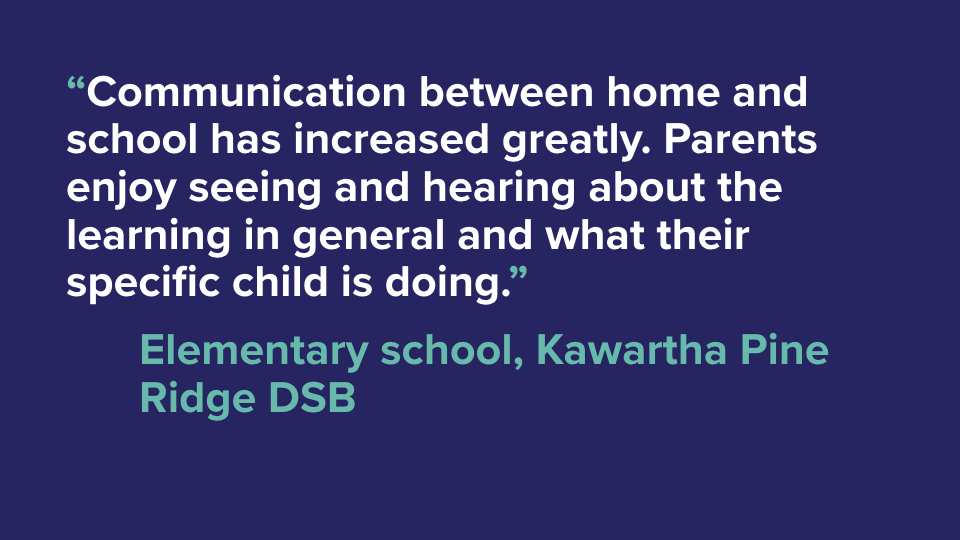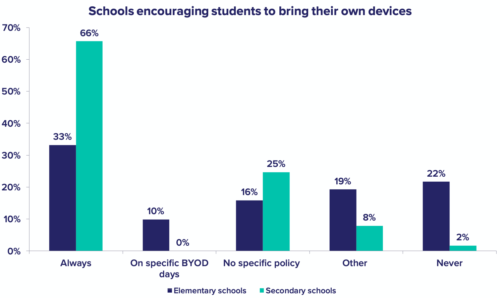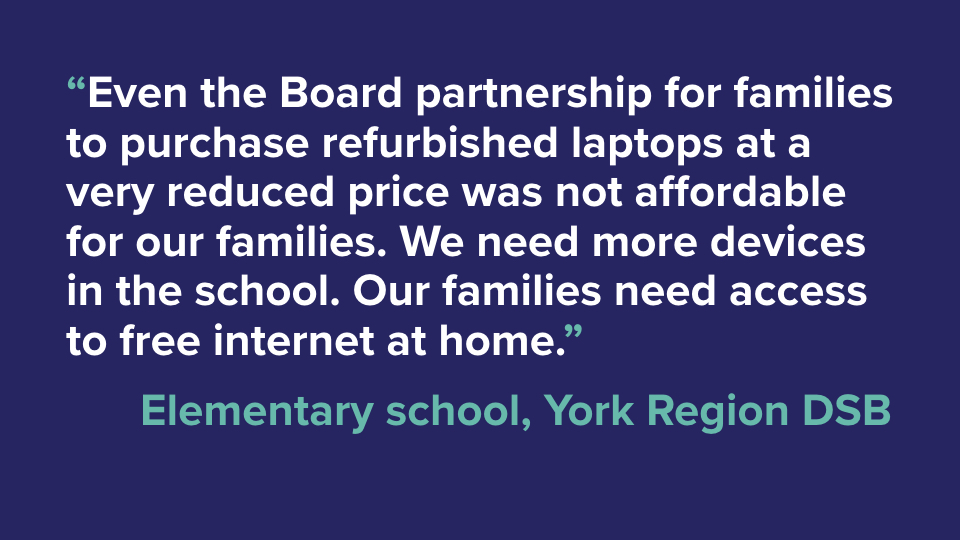Connecting to success: Technology in Ontario's schools
New report reveals challenges for implementation of new provincial policy
 The use of technology and digital learning have become ingrained in today’s schools. Classrooms immersed in digital learning encourage students to work collaboratively, develop problem solving, critical thinking, and creativity skills, and be motivated to learn. However, Ontario principals report that a lack of funding, poor connectivity, and insufficient access to professional development can make it challenging to successfully integrate technology in schools.
The use of technology and digital learning have become ingrained in today’s schools. Classrooms immersed in digital learning encourage students to work collaboratively, develop problem solving, critical thinking, and creativity skills, and be motivated to learn. However, Ontario principals report that a lack of funding, poor connectivity, and insufficient access to professional development can make it challenging to successfully integrate technology in schools.
Our latest report, based on the results from our Annual Ontario School Survey, focuses on the availability and use of technology, and its role in student learning.
 Cellphones in schools: The BYOD phenomenon
Cellphones in schools: The BYOD phenomenon
The government has announced that it plans to ban cellphones in schools, but according to the report’s findings, they are being used extensively to support learning.
Bring Your Own Device (BYOD) policies encourage students to bring their own smartphones, tablets, or laptops to class. They are used in a variety of ways: to create presentations, podcasts, interactive maps, or graphic designs; as well as to facilitate video conferencing, take notes on lessons, translate materials, and collaborate with peers and teachers.
Among the findings in this year’s report:
- 33% of elementary and 66% of secondary schools encourage students to “Bring Your Own Device” (BYOD) every day.
- Overall, 62% of elementary and 74% of secondary schools encourage BYOD in some way, whether it is only for specific grades, on certain days, or for all students without restriction.
- 64% percent of elementary and 93% of secondary schools with BYOD policies report at least some of the teachers create lessons with BYOD in mind. Among elementary schools that allow BYOD, 27% of schools start BYOD in grade 4, and 19% start in kindergarten.
- In 63% of secondary and 29% of elementary schools, individual teachers are responsible for creating the cell phone policy.
Technology and communication
In 2014, 88% of elementary schools reported that some teachers communicated online with parents/students. Five years later, 97% of elementary schools and 100% of secondary schools report that their teachers use technology to communicate with students. Through these tools, students can email teachers with questions, ask for one-on-one support, watch videos, or read articles related to class learning. They also allow teachers to assess student performance, inform parents about classroom activities, and post announcements.
E-learning

From 2008-2014, People for Education asked school principals how many students are enrolled in e-learning courses. This question was asked again five years later in 2019
In March 2019, the Ontario government announced that, beginning in September 2020, all secondary students will be required to take four e-learning credits during their high school careers. The results from our survey show that there is a large gap to be closed in order to meet that goal. While 87% of high schools have at least some students enrolled in e-learning, an average of only 5% of students per school are taking these courses. This is a small but steady increase over the last ten years.
Equity and access to technology
Not all students have access to computers or the internet at home. And, despite its increasing presence, access to technology varies considerably from school to school.
 In their responses to the survey, principals report technology is often purchased through school fundraising. Sixty-eight percent of elementary and 22% of secondary schools fundraise for technology. At the same time, they report challenges with relying on fundraising to purchase and maintain technology, and that it is more difficult to raise these funds in low-income neighbourhoods.
In their responses to the survey, principals report technology is often purchased through school fundraising. Sixty-eight percent of elementary and 22% of secondary schools fundraise for technology. At the same time, they report challenges with relying on fundraising to purchase and maintain technology, and that it is more difficult to raise these funds in low-income neighbourhoods.
Using data from Statistics Canada, we looked at the top and bottom 25% of elementary schools in our sample based on income. In 2019, 85% of elementary schools in high-income neighbourhoods fundraise for technology, compared to 54% of elementary schools in low-income neighbourhoods. Elementary schools in higher-income neighbourhoods are also more likely to have BYOD policies than those in lower-income neighbourhoods.
Among schools that encourage BYOD, principals report that less than half of elementary students, and two-thirds of secondary students, participate in the initiative. In their comments, some principals note that BYOD policies are not successful in neighbourhoods where families don’t have technology access at home.
Access to technology is also affected by geographic location, with some principals in rural areas reporting challenges with connectivity and internet speeds.
Recommendations
In order to ensure that technology can be successfully integrated into students’ learning, the report makes several recommendations, including the provision of funding for technology upgrades, professional development, and broadband access. It also recommends that the Ministry consult with school administration, teachers, and students before implementing the requirement that students take four e-learning credits over their secondary career, as it is not clear if all students and teachers are equipped with the infrastructure, tools, and strategies to learn successfully and teach effectively online.
